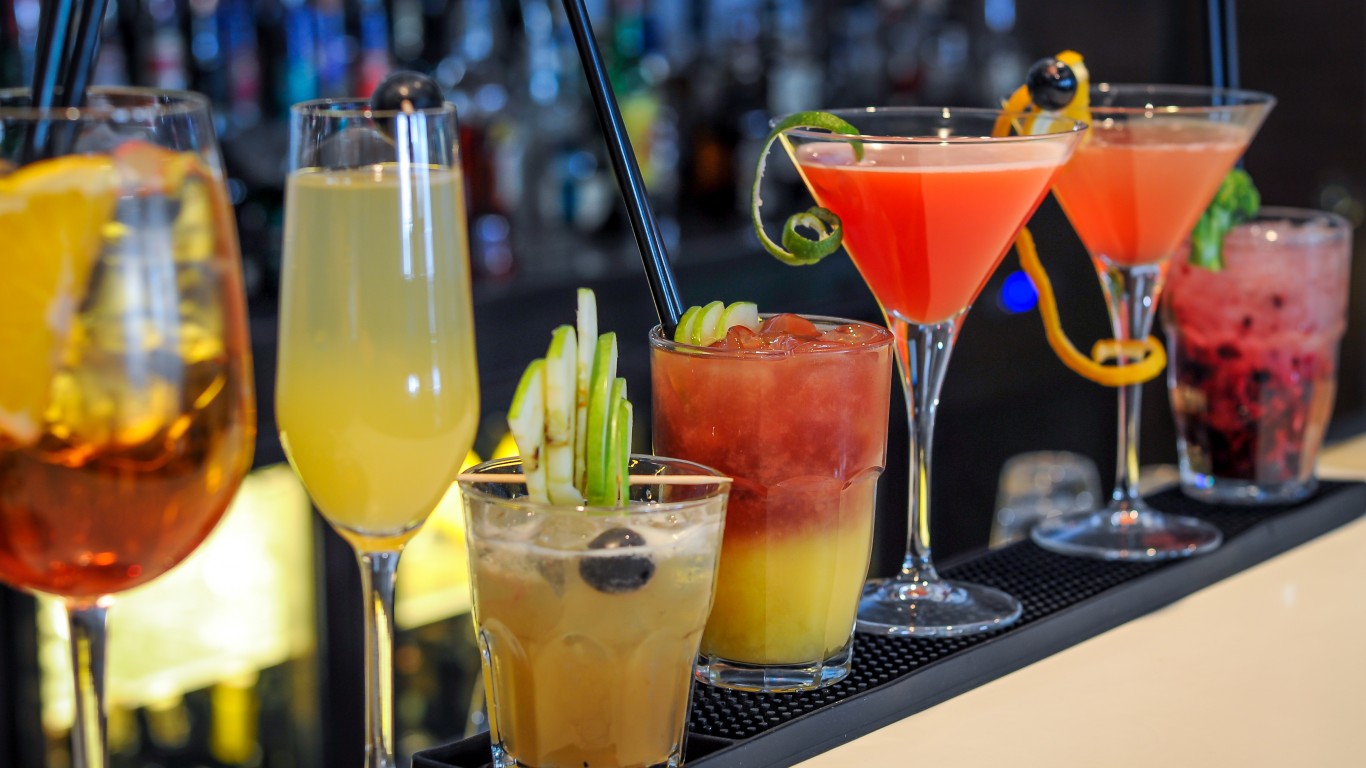
Alcoholic beverages — originally in the form of beer — have been around since approximately 7000 B.C. Cocktails have a more recent history.
The origin of the term is a bit murky. It was first used as early as 1750, not to describe a mixed drink but as an adjective for horses whose tails had been docked and thus stuck — “cocked” — upwards. According to the Oxford English Dictionary, just why the word became applied to alcoholic mixtures “is much discussed and debated.”
Though recent research has turned up two possible earlier uses of the term to describe a drink, the first unambiguous reference was published in an upstate New York newspaper in 1806, defining a “cocktail” as “a stimulating liquor composed of spirits of any kind, sugar, water, and bitters.” (That sounds as if it might have qualified for inclusion in our list of 28 low-calorie alcoholic drinks.)
By the mid-19th century, cocktails had gained great popularity in America, and in 1862 New York City saloon-keeper and bartender Jerry Thomas published the nation’s first drinks book — the definitive “Bar-Tender’s Guide,” also known as “How to Mix Drinks or the Bon-Vivant’s Companion”. (Still considered a valuable reference work, it is available in reprint to this day.)
What really catapulted cocktails into the mainstream was the ready availability of ice, beginning in the latter 1800s. Without ice, drinks were lukewarm and hardly satisfying. Ice cooled things down, making cocktails tasty and refreshing. Unfortunately, just as cocktails were soaring in popularity, Prohibition outlawed the “manufacture, sale and transportation of intoxicating liquors” in the U.S. People still drank, but the liquor was often of poor quality, so bartenders got creative, masking the bad taste with juices and other ingredients.
After Prohibition ended in 1933, the creation of new concoctions continued, leading to the golden age of the cocktail in the mid-20th century. (Think of the three-martini lunches of the “Mad Men” era.) Interest in cocktails waned a bit in the 1960s and 1970s, but revived in the 1990s, and many bars and restaurants today promote their cocktail programs, with bartenders inventing ever more imaginative (and often curiously named) libations.
What are the most popular cocktails around the world today? To find out, 24/7 Tempo reviewed the results of a survey conducted by Drinks International, a publication covering the global spirits, wine, and beer markets. To discover which cocktails are ordered most, Drinks International asked a sample of 100 of the world’s best bars which mixed drinks they sold the most.
The results suggest that time-honored cocktails never go out of style. The top five on this list — the Old Fashioned, the Negroni, the Daiquiri, the Dry Martini, and the Margarita — have all been consumed for decades, and remain staples on every cocktail menu across the country. Newer drinks like the Penicillin and the Espresso Martini are gaining popularity, however. (See which cocktails are among the signature drinks in every state.)
While the majority of these classic cocktails were created in America, it is also worth noting that seven other countries have also contributed to this list, proving that cocktails are truly international.
Click here to see the world’s 25 most popular cocktails
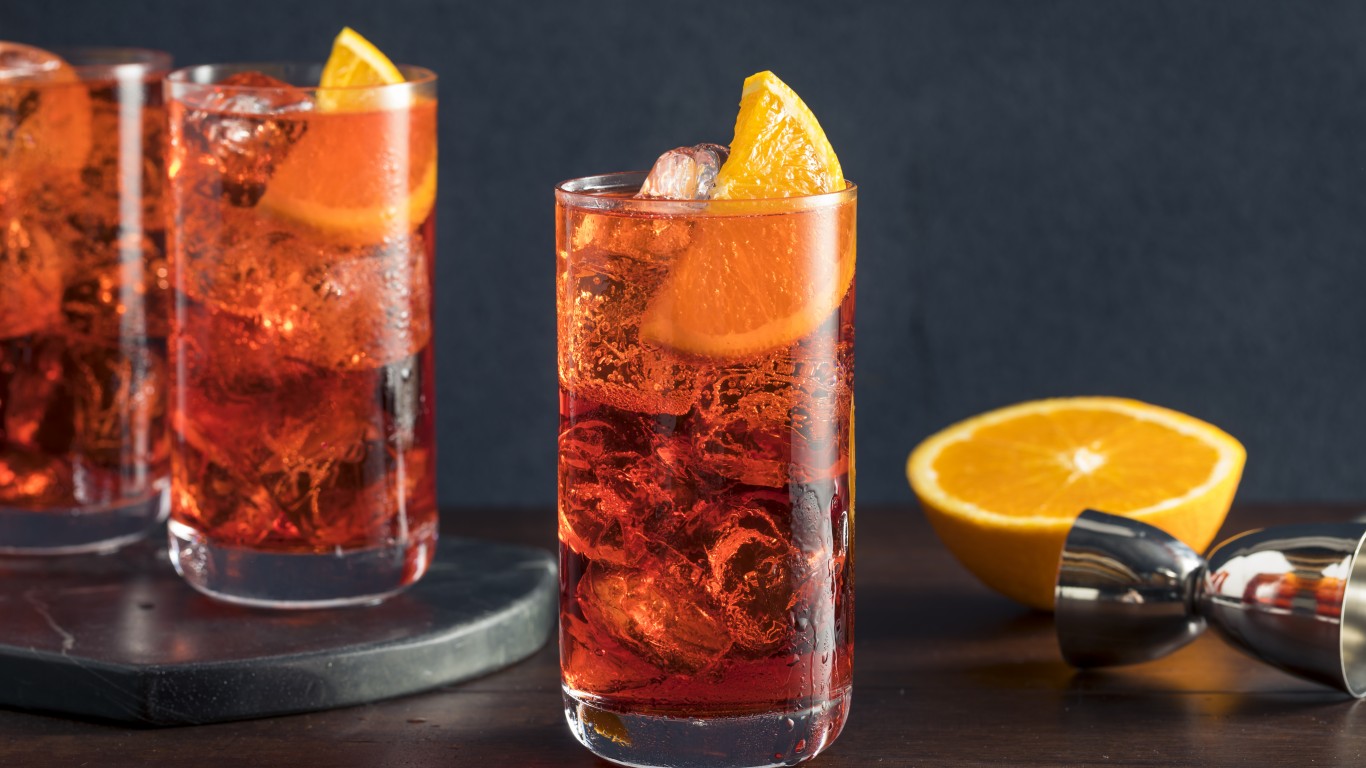
25. Americano
> Main ingredients: Campari, sweet vermouth, club soda
> Origin: Caffè Campari, Milan (1860s)
[in-text-ad]
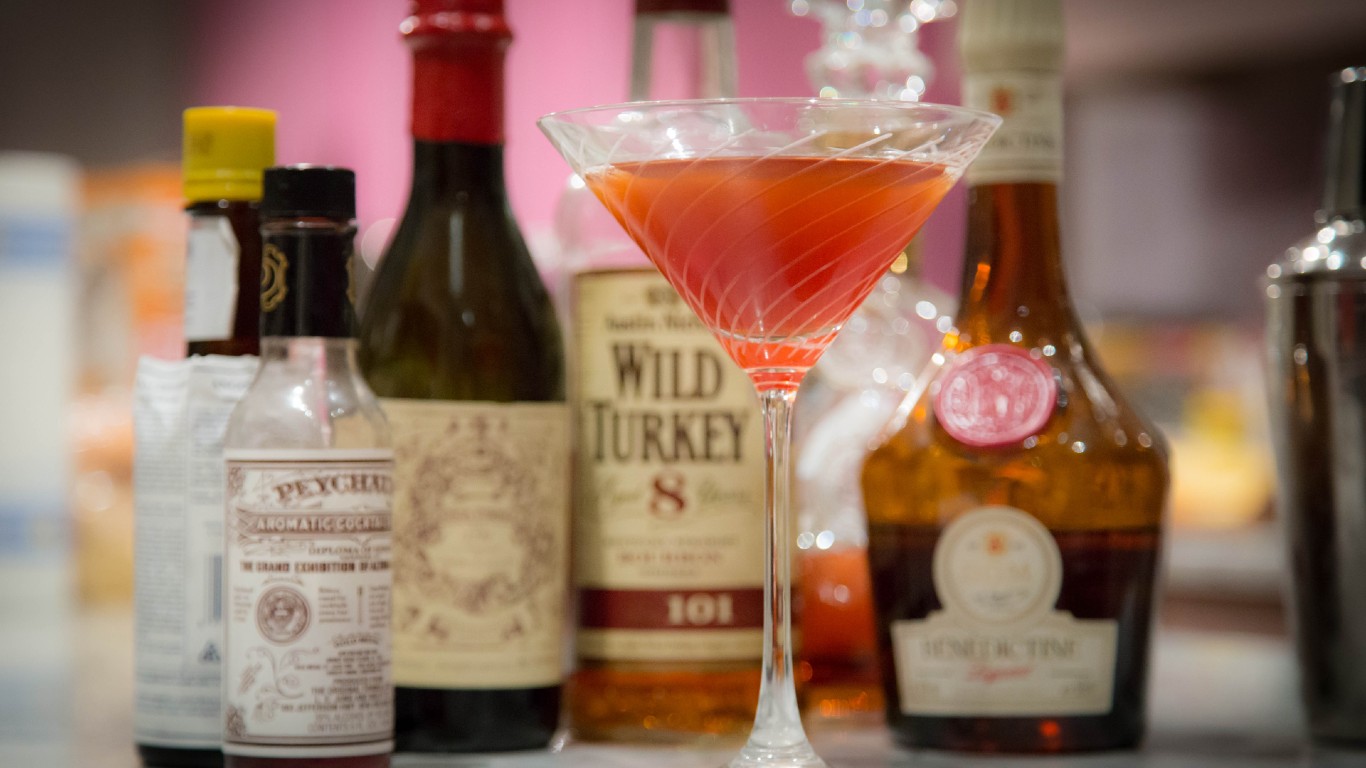
24. Vieux Carré
> Main ingredients: Rye whiskey, cognac, sweet vermouth, Bénédictine, Peychaud’s bitters
> Origin: Bartender Walter Bergeron, The Carousel Bar at the Hotel Monteleone, New Orleans (1937)

23. Pisco Sour
> Main ingredients: Pisco brandy, lemon juice, simple syrup, egg white
> Origin: Bartender Mario Bruiget, Morris’ Bar, Lima, Peru (late 1920s)
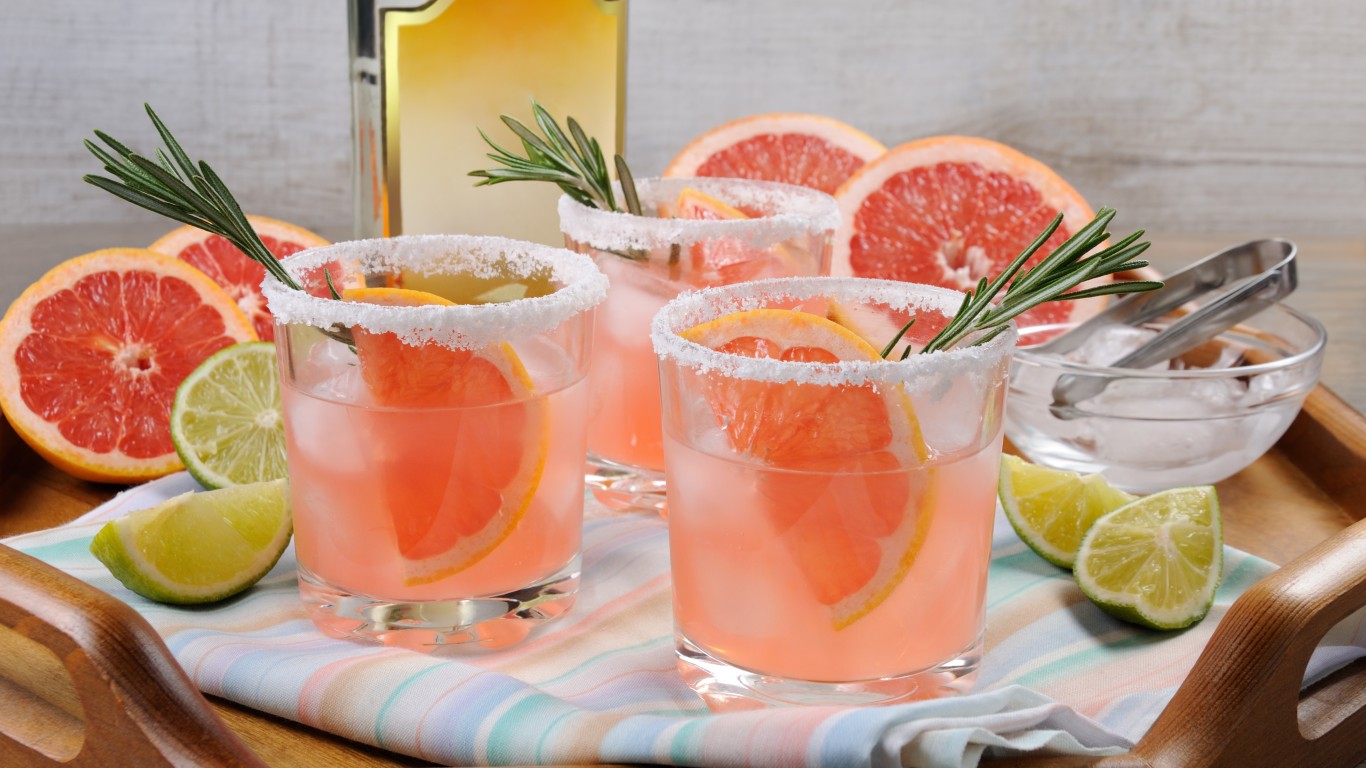
22. Paloma
> Main ingredients: Tequila, lime juice, grapefruit soda
> Origin: Mexico, details unknown (mid-1950s)
[in-text-ad-2]
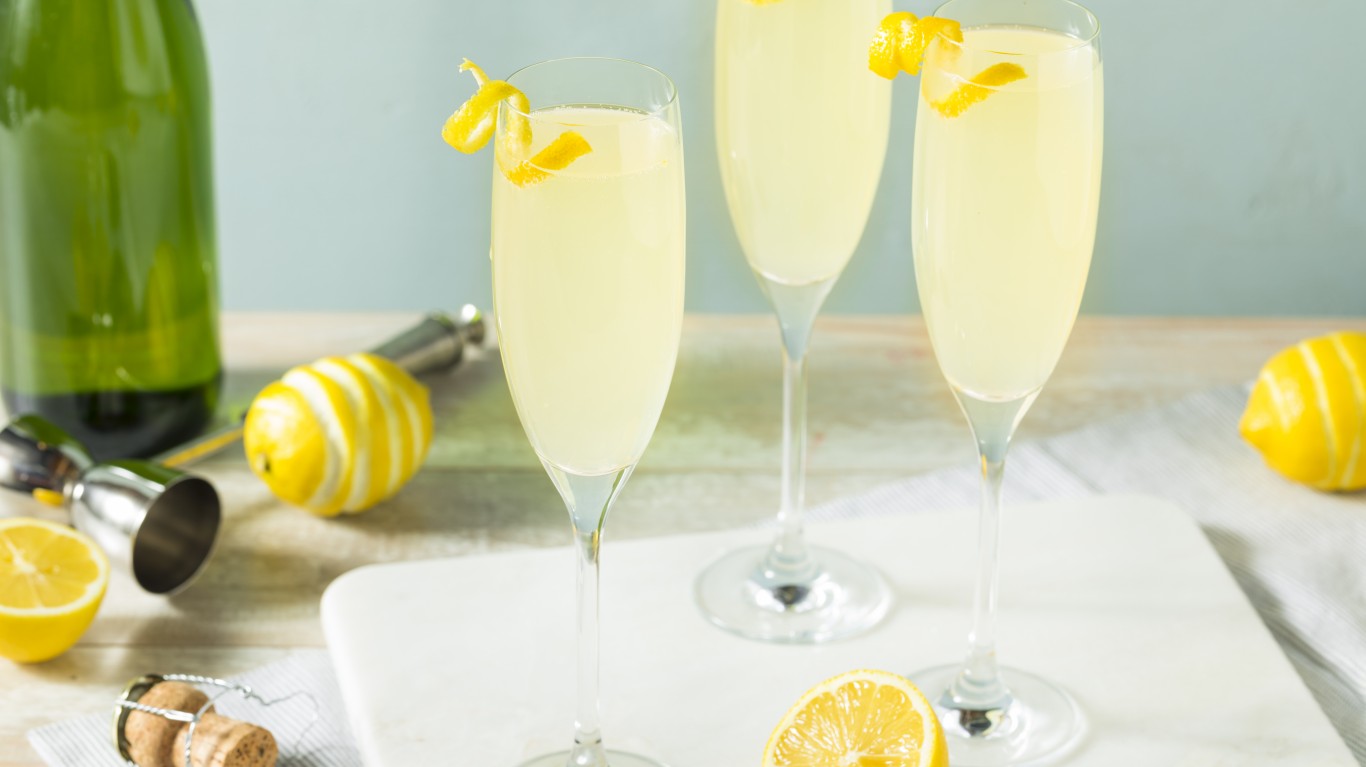
21. French 75
> Main ingredients: Gin, champagne, lemon juice, sugar cube
> Origin: Bar owner Harry MacElhone, Harry’s New York Bar, Paris (1915)

20. Sazerac
> Main ingredients: Cognac (originally), rye whiskey (now), absinthe, Peychaud’s bitters, sugar cube
> Origin: Sazerac Coffee House, New Orleans (1850s)
[in-text-ad]
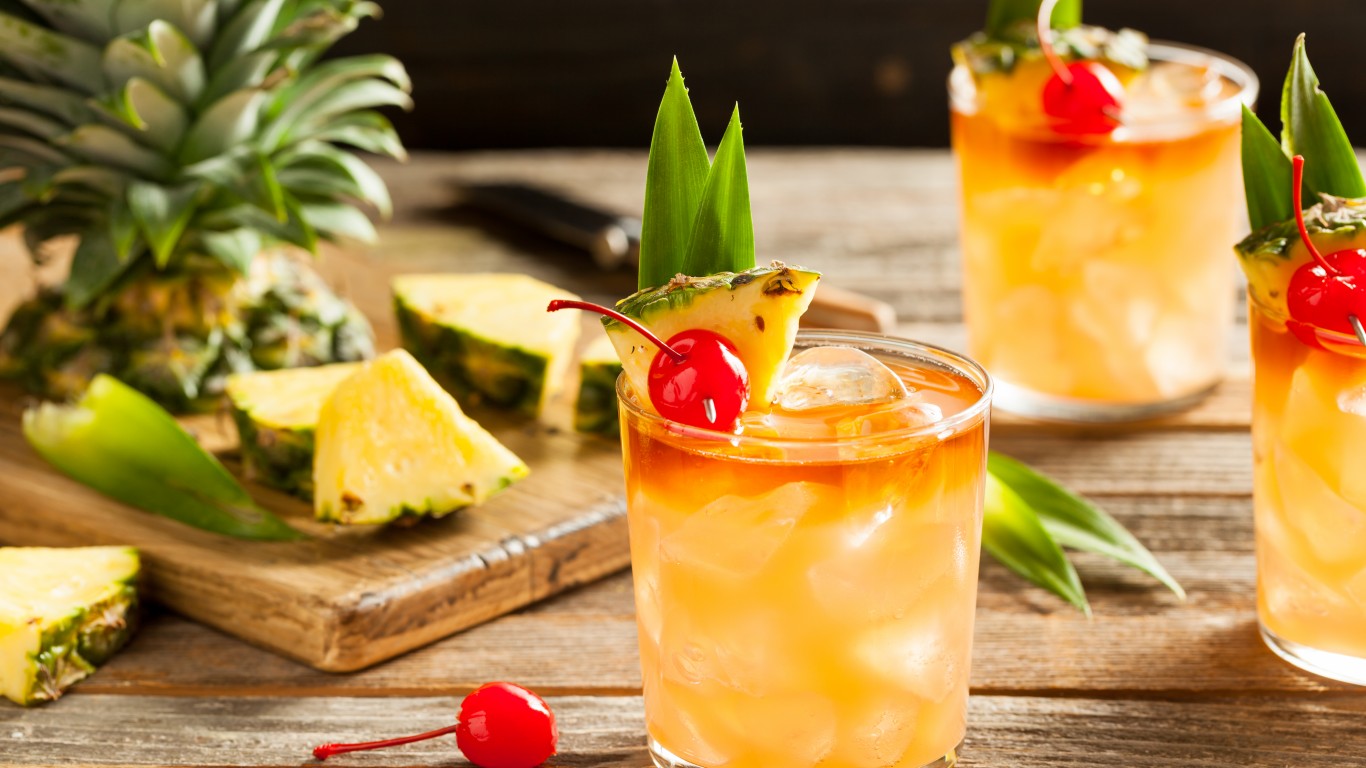
19. Mai Tai
> Main ingredients: Rum (typically two varieties), orange curaçao, orgeat syrup, lime juice, simple syrup (recipes vary)
> Origin: Donn Beach, Don the Beachcomber, Hollywood, California (1933) or Vic Bergeron, Trader Vic’s, Oakland, California (1944)
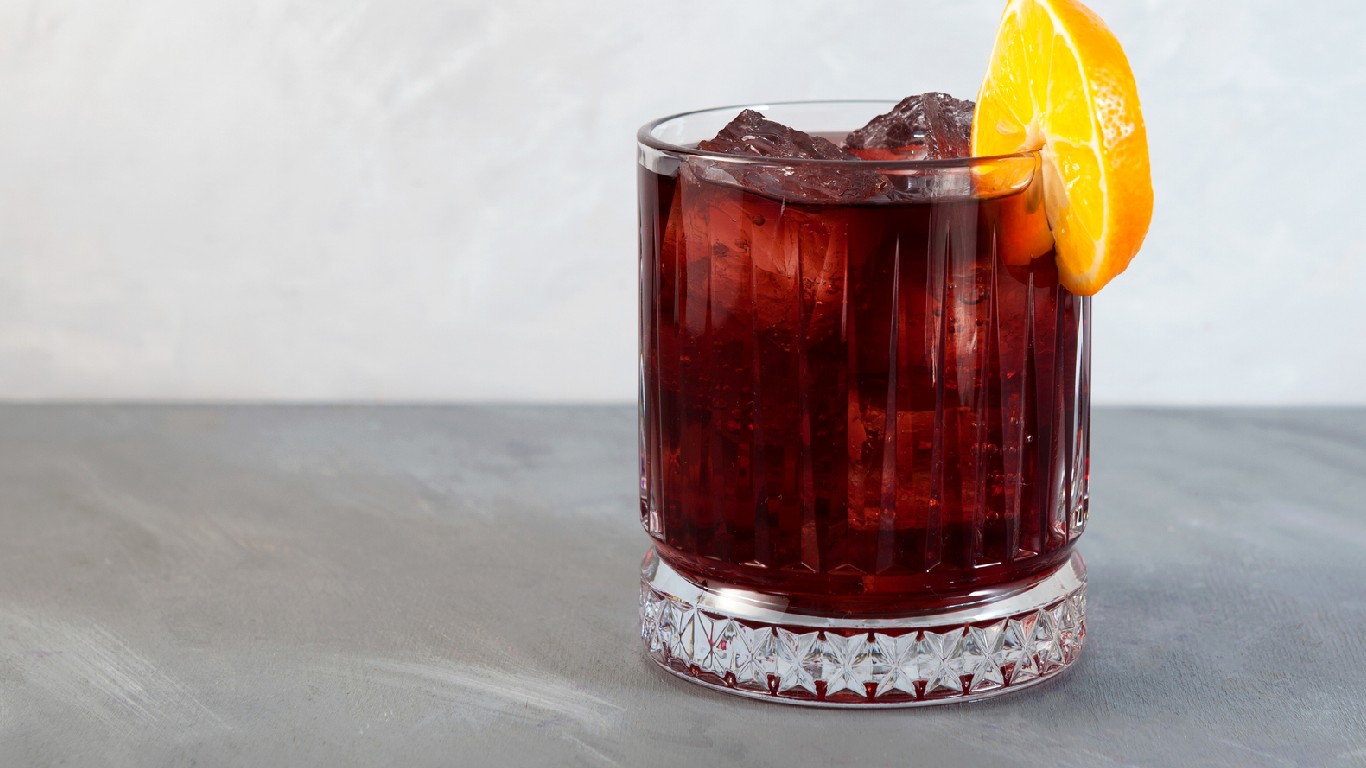
18. Boulevardier
> Main ingredients: Bourbon whiskey, Campari, sweet vermouth
> Origin: Magazine editor Erskine Gwynne, Paris (late 1920s or early 1930s)
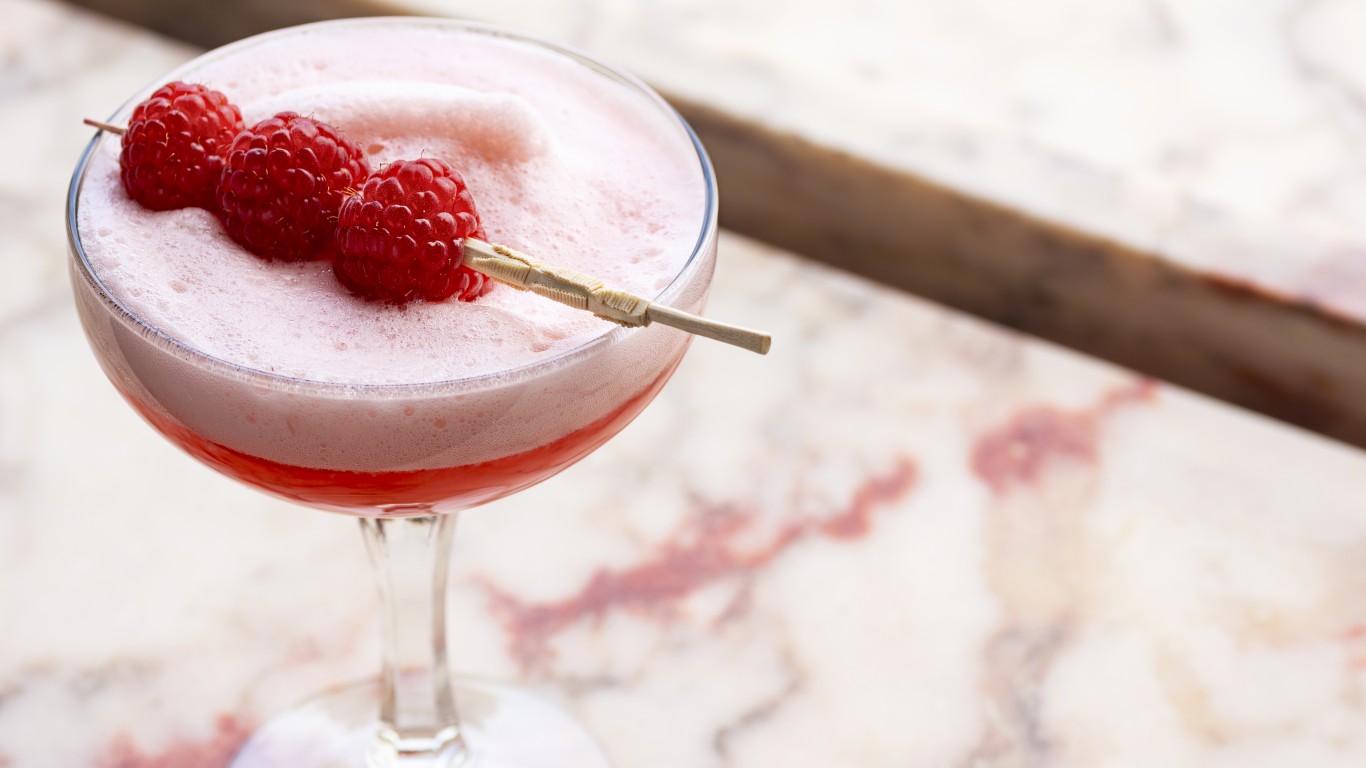
17. Clover Club
> Main ingredients: Gin, dry vermouth, lemon juice, raspberry syrup, egg white
> Origin: The Clover Club, Philadelphia (1910s)
[in-text-ad-2]
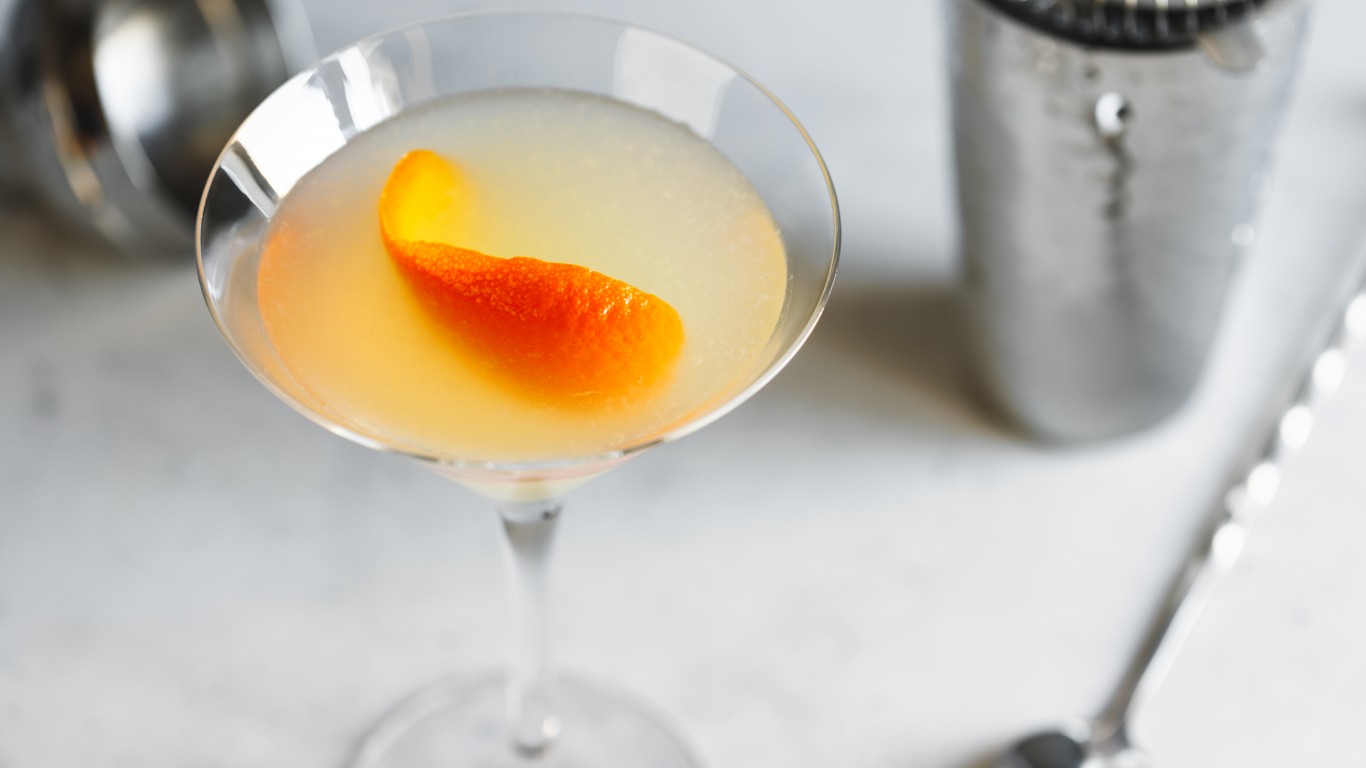
16. Corpse Reviver
> Main ingredients: Cognac, apple brandy, sweet vermouth (Corpse Reviver No. 1); gin, Cointreau, Lillet Blanc, lemon juice, absinthe (Corpse Reviver No. 2)
> Origin: Bartender Harry Craddock, American Bar, Savoy Hotel, London (1930s?)
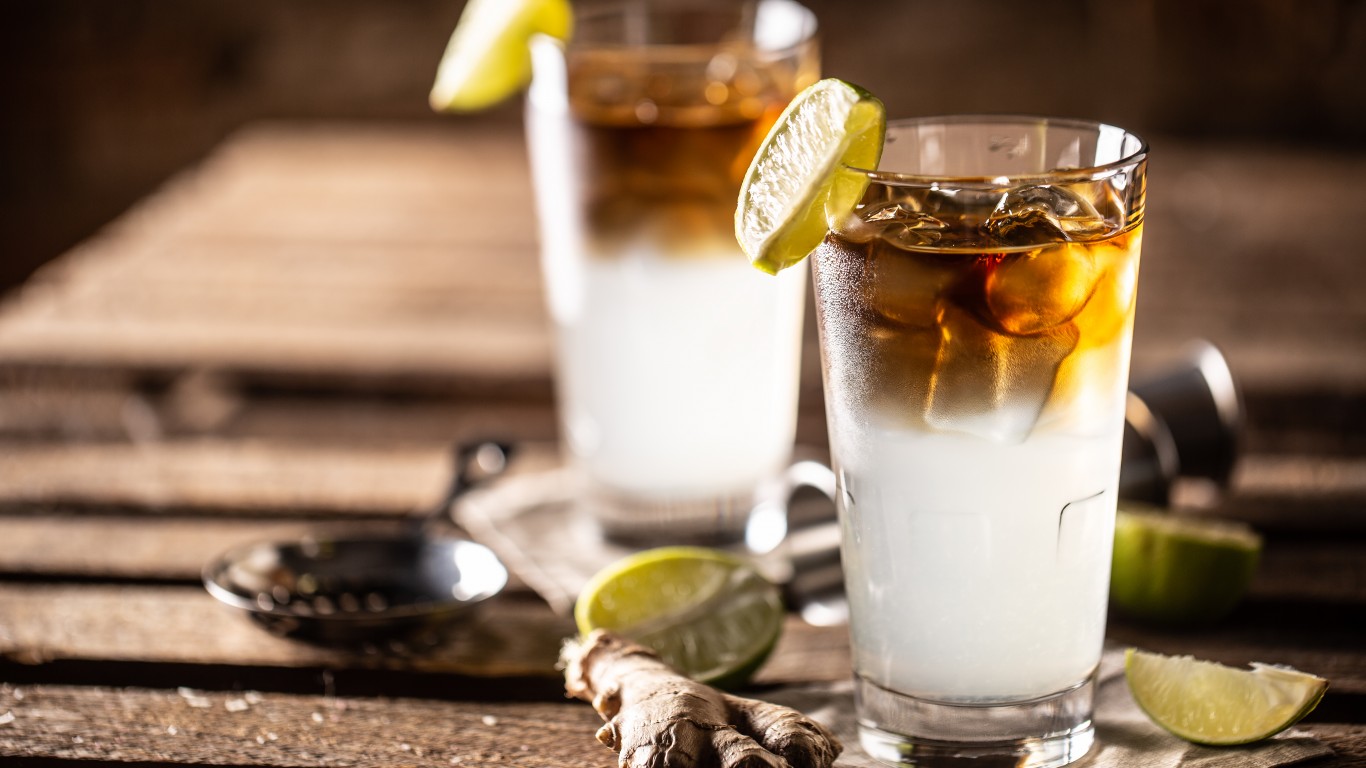
15. Dark ‘n’ Stormy
> Main ingredients: Goslings or other dark rum, ginger beer
> Origin: Bermuda (late 1910s?)
[in-text-ad]
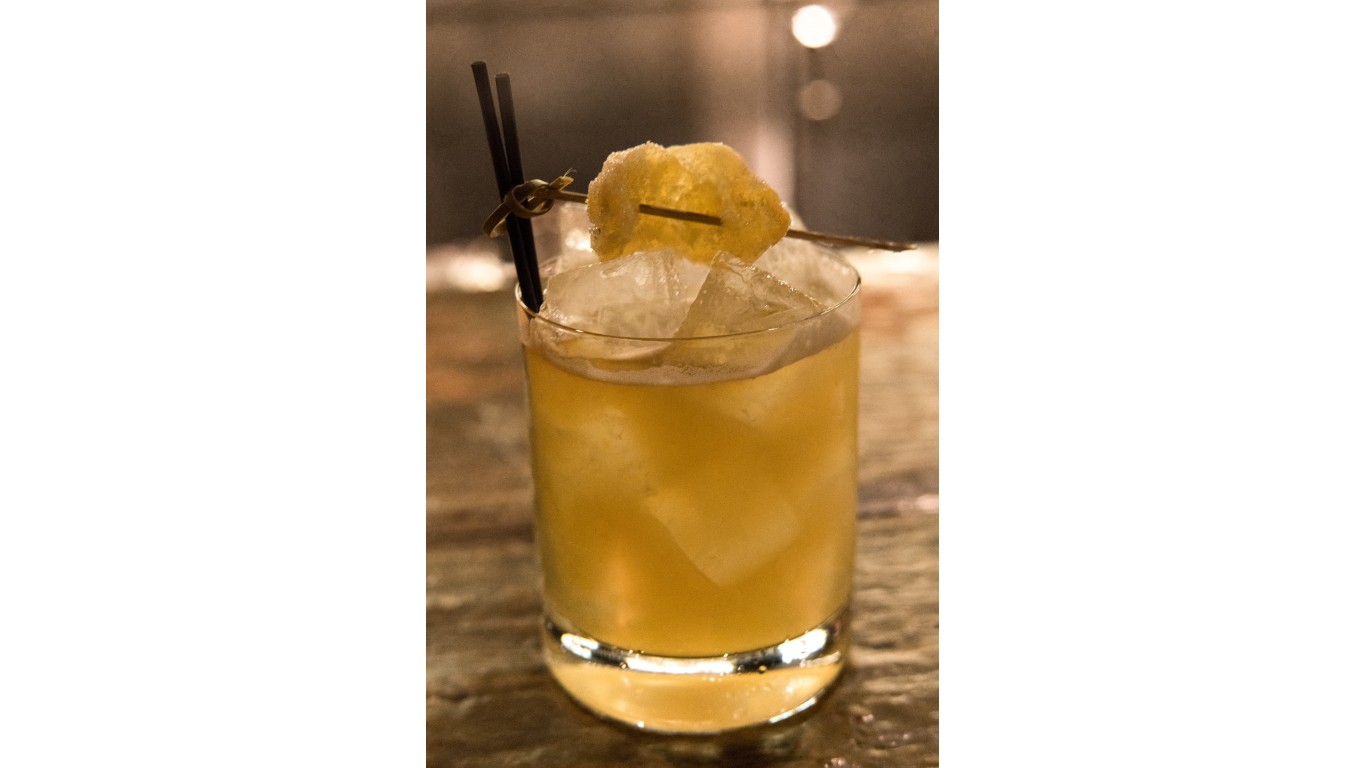
14. Penicillin
> Main ingredients: Blended scotch whisky, Lagavulin 16-year-old single malt scotch, lemon juice, honey syrup, fresh ginger slices
> Origin: Bartender Sam Ross, Milk & Honey, New York City (2005)
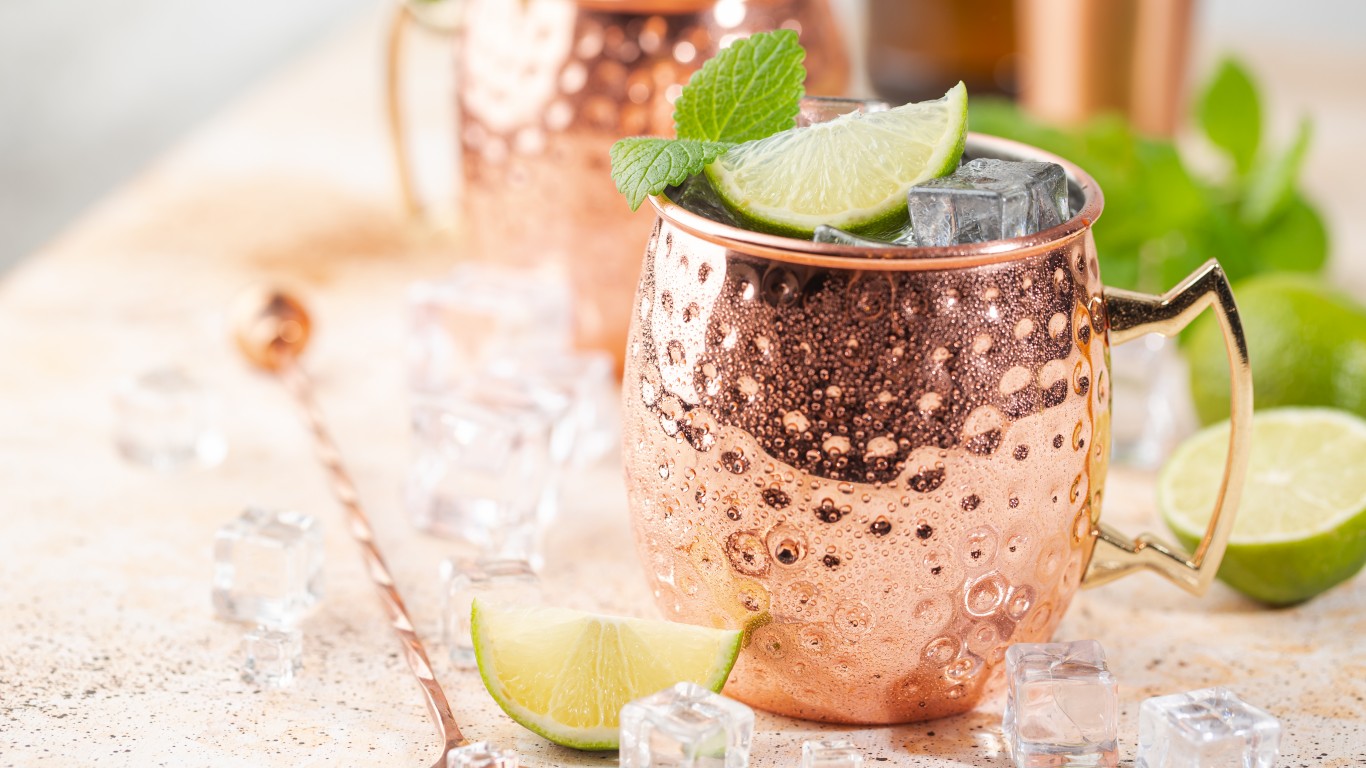
13. Moscow Mule
> Main ingredients: Vodka, ginger beer, lime juice
> Origin: The Chatham Hotel bar, New York City (early 1940s)
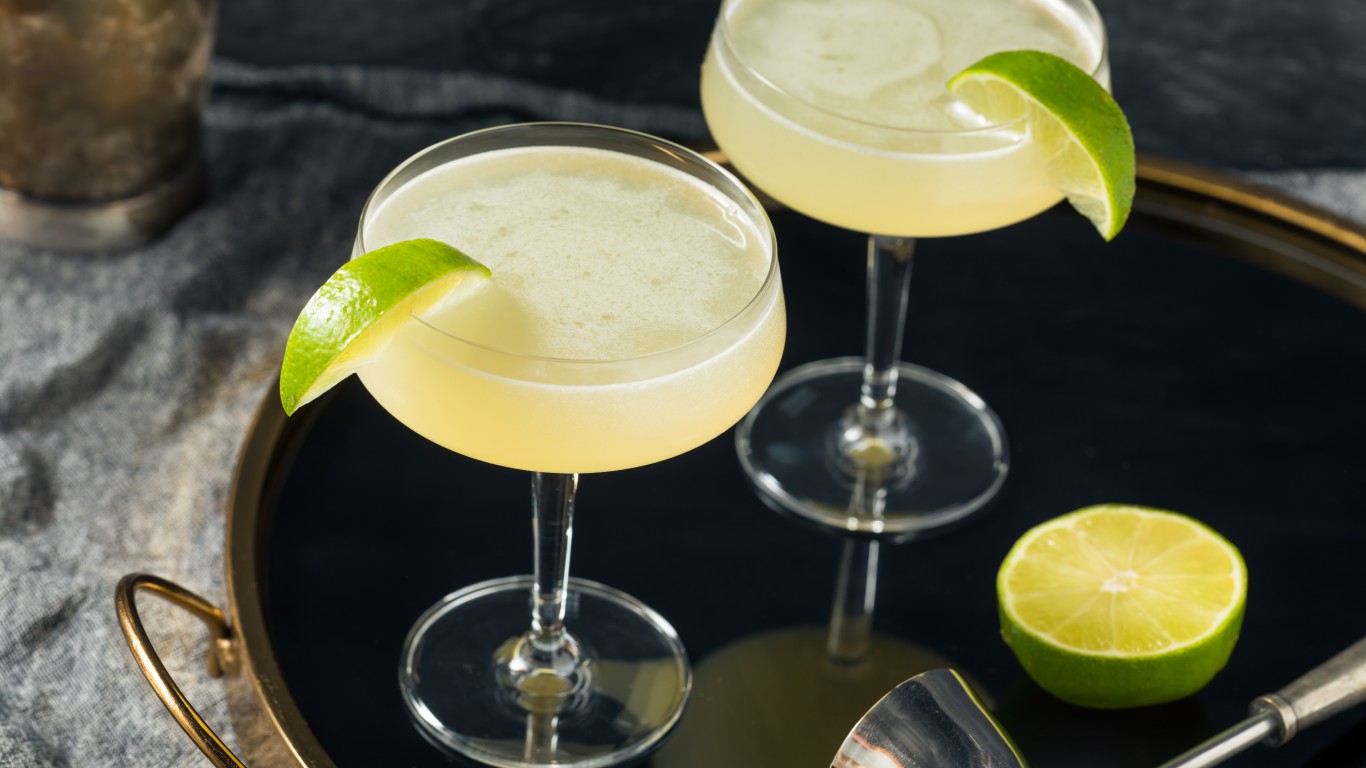
12. Gimlet
> Main ingredients: Gin or vodka, lime juice
> Origin: Royal British Navy rear admiral Sir Thomas Gimlette (1880s) (?)
[in-text-ad-2]
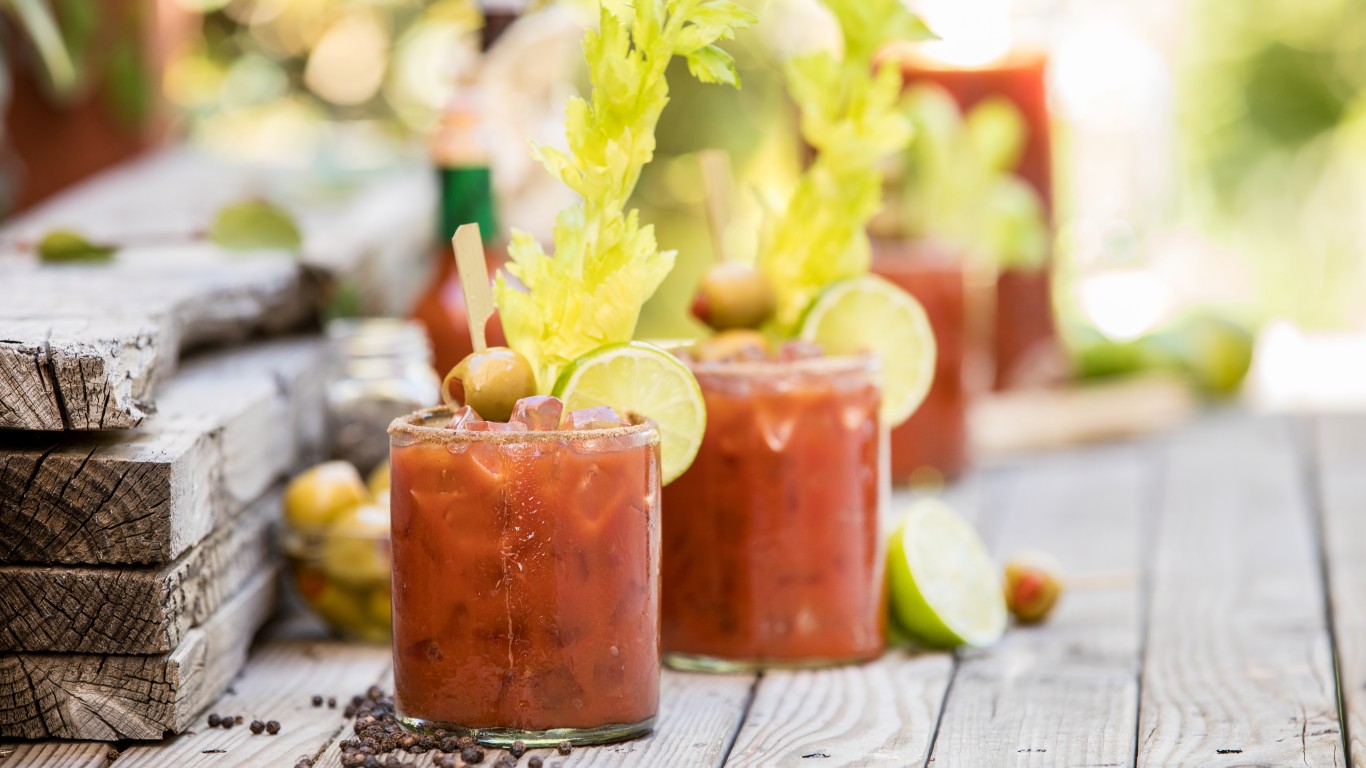
11. Bloody Mary
> Main ingredients: Vodka, tomato juice, Worcestershire sauce, horseradish, hot sauce, and other seasonings
> Origin: Bartender Fernand Petiot, Harry’s New York Bar, Paris (1921)
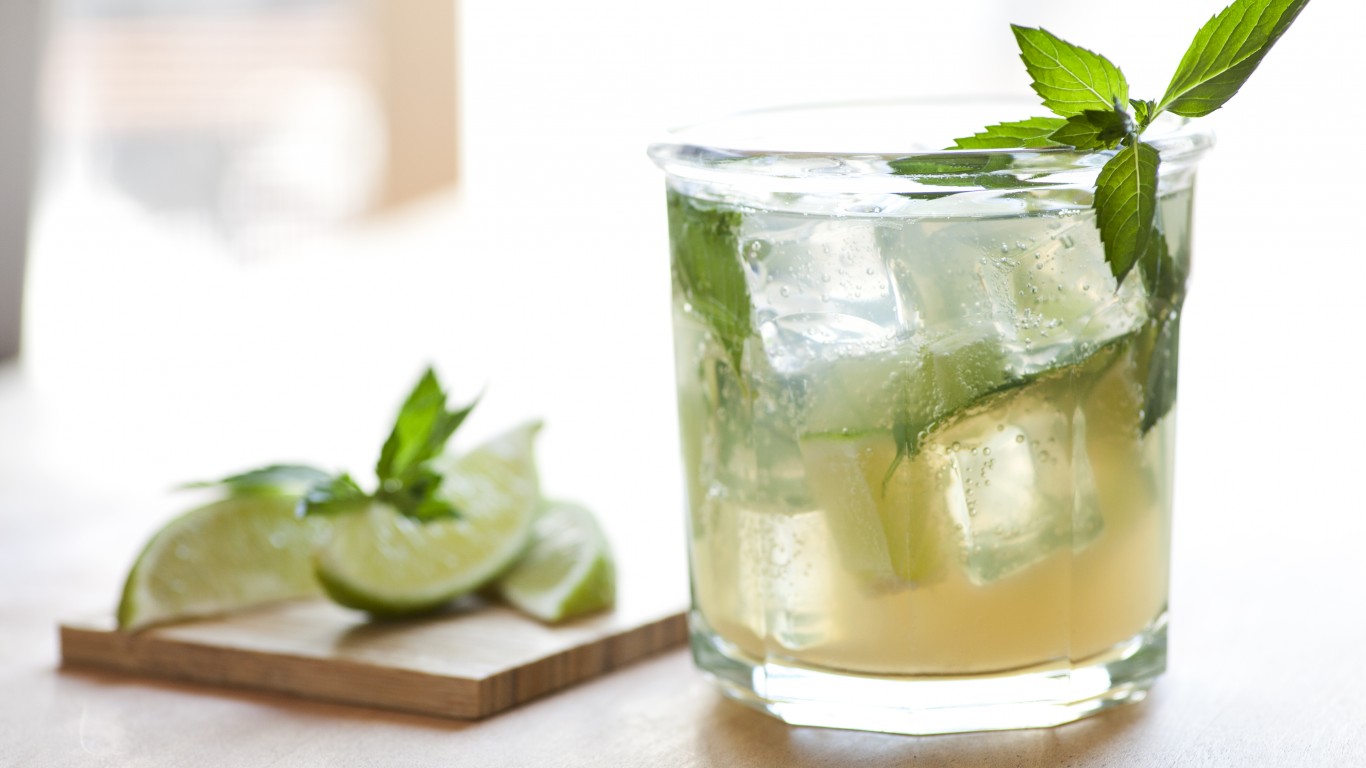
10. Mojito
> Main ingredients: Rum, lime juice, muddled mint leaves, simple syrup
> Origin: African slaves, Dutch or British sailors, or others, Havana (19th century)
[in-text-ad]
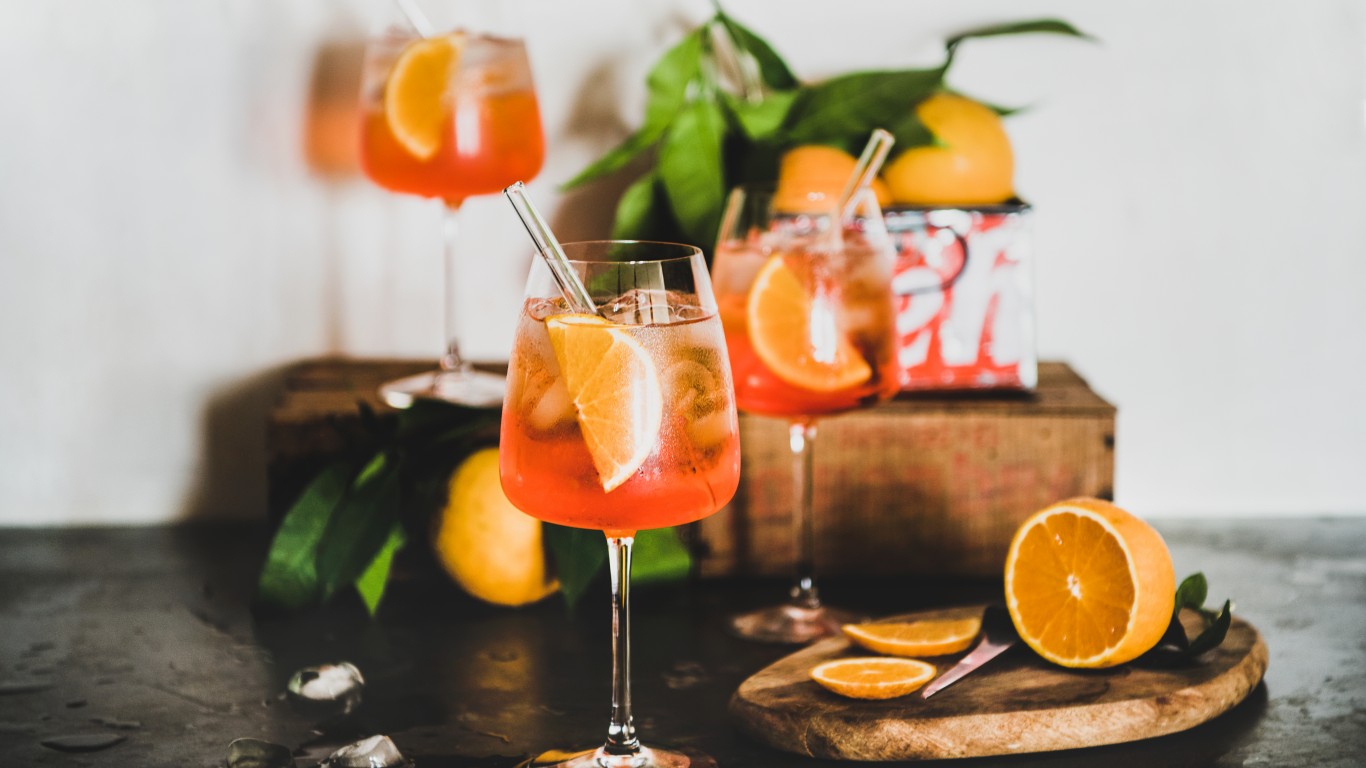
9. Aperol Spritz
> Main ingredients: Aperol aperitivo, prosecco
> Origin: Venice or Padua, Italy (1930s?)
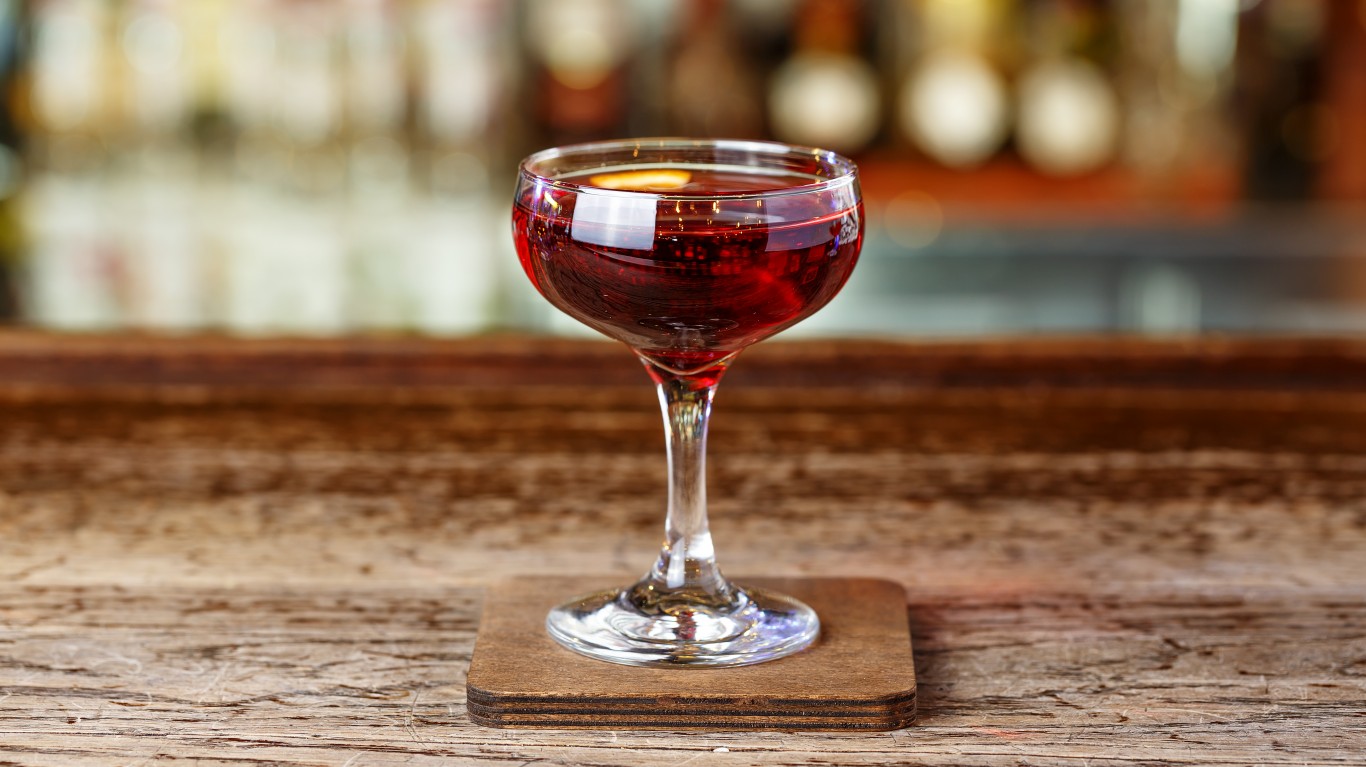
8. Manhattan
> Main ingredients: Rye, bourbon, Canadian, or other whiskey; sweet vermouth, Angostura bitters
> Origin: Bartender Iain Marshall, The Manhattan Club, New York City (mid-1870s) (?)
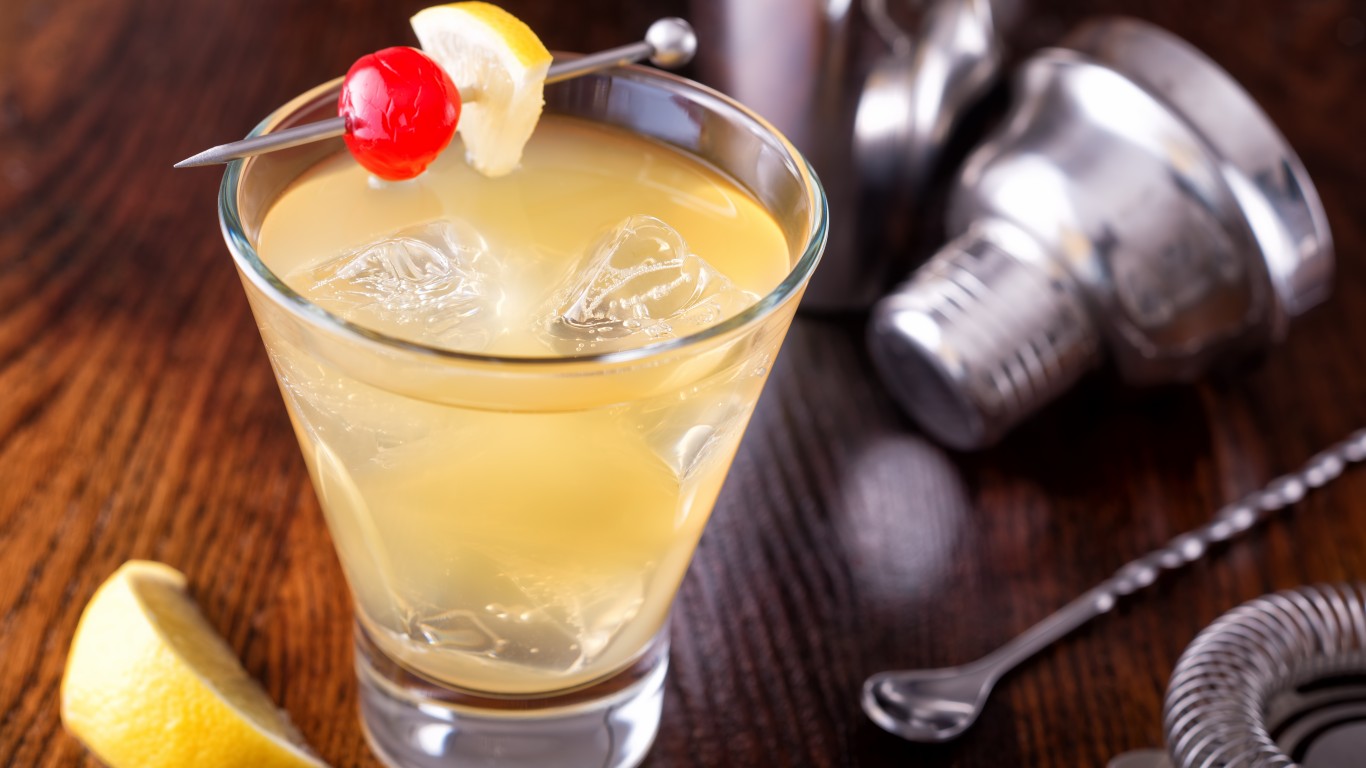
7. Whiskey Sour
> Main ingredients: Bourbon or other whiskey, lemon juice, sugar, egg white
> Origin: Ship steward Elliot Staub, Iquique, Chile (1872)
[in-text-ad-2]
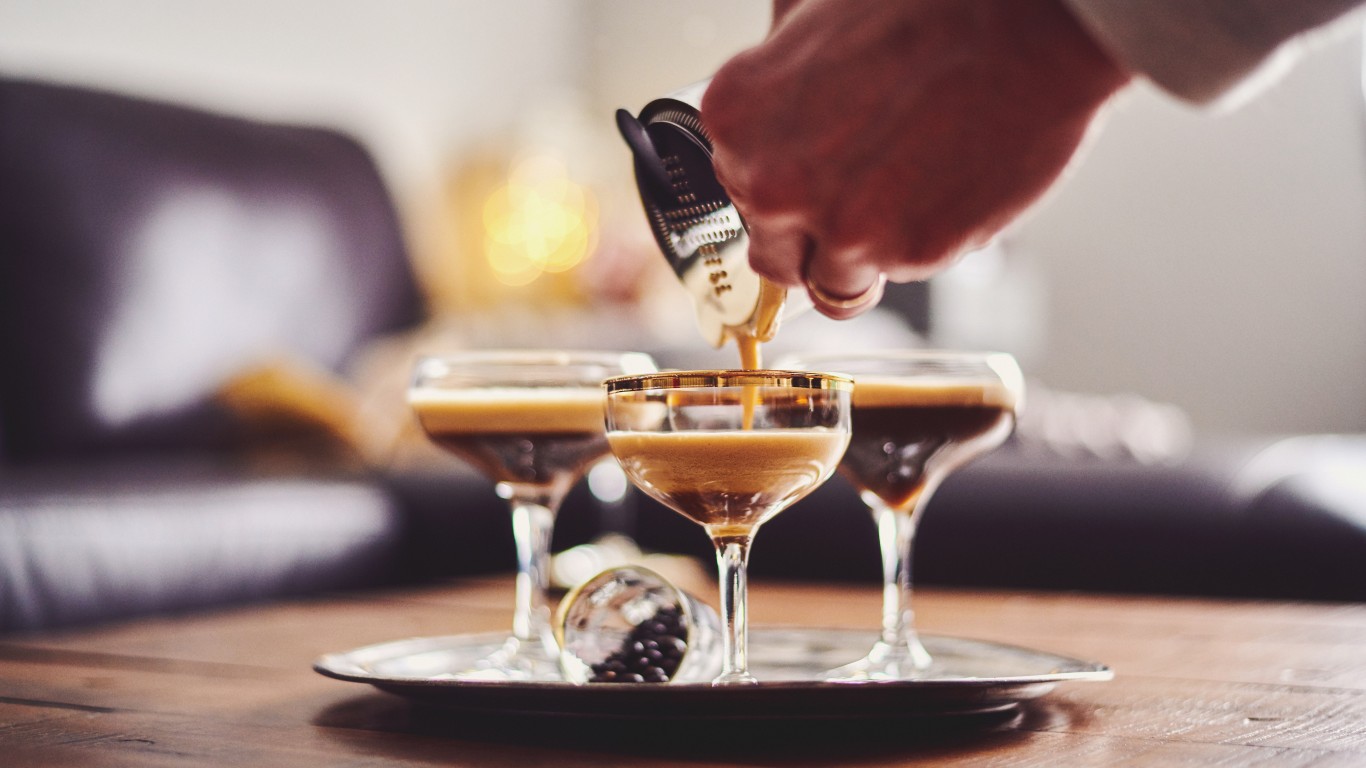
6. Espresso Martini
> Main ingredients: Vodka, Kahlua, espresso coffee
> Origin: Bartender Bradsell, Freds Club, London (late 1980s)
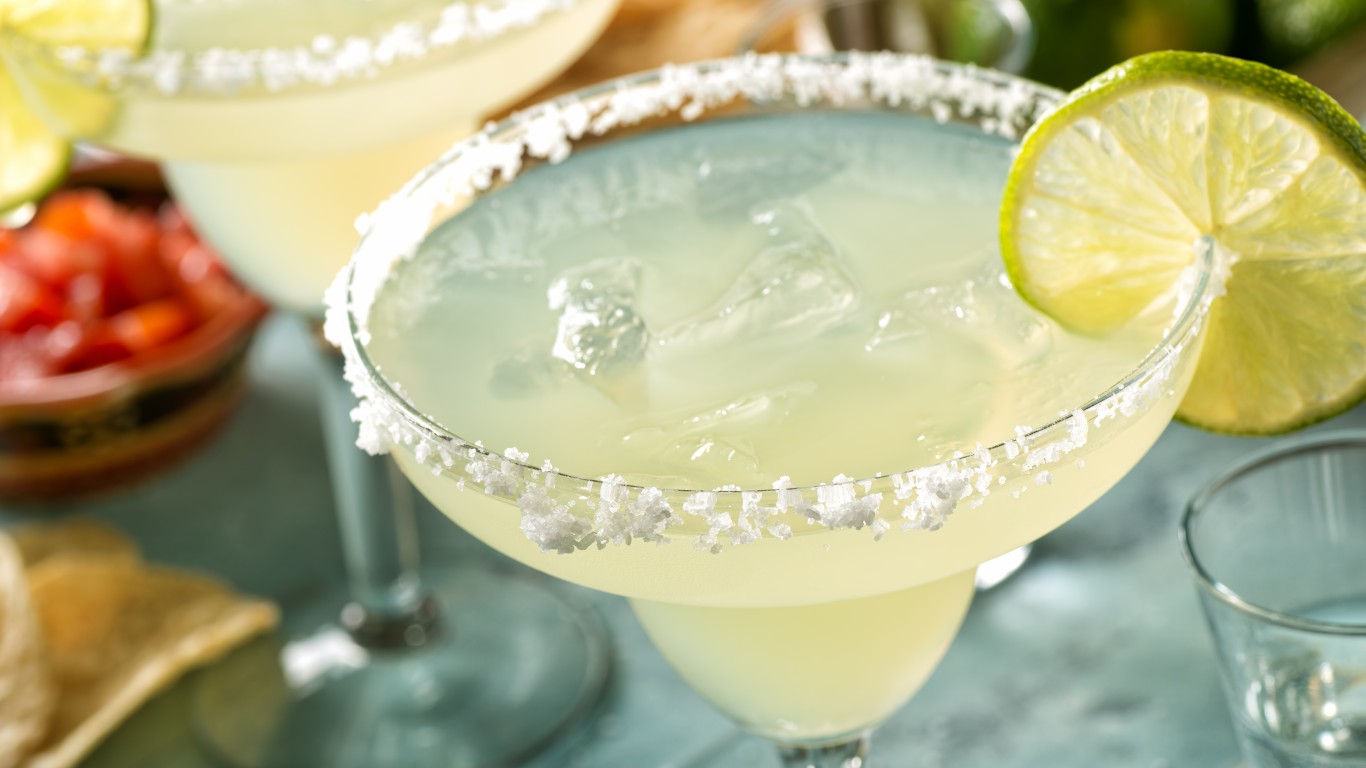
5. Margarita
> Main ingredients: Tequila, triple sec or other orange liqueur, lime juice
> Origin: Disputed (1930s)
[in-text-ad]
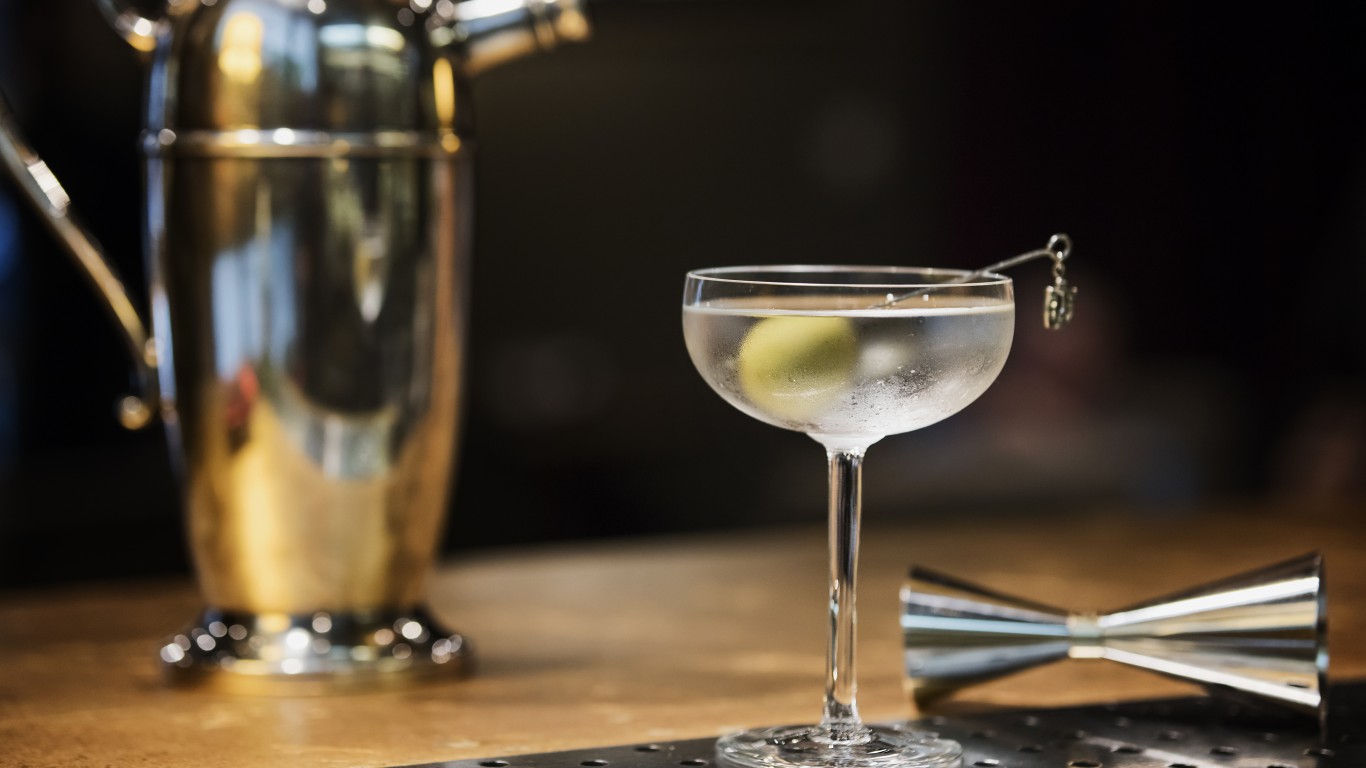
4. Dry Martini
> Main ingredients: Gin or vodka, dry vermouth
> Origin: Disputed (1910s?)
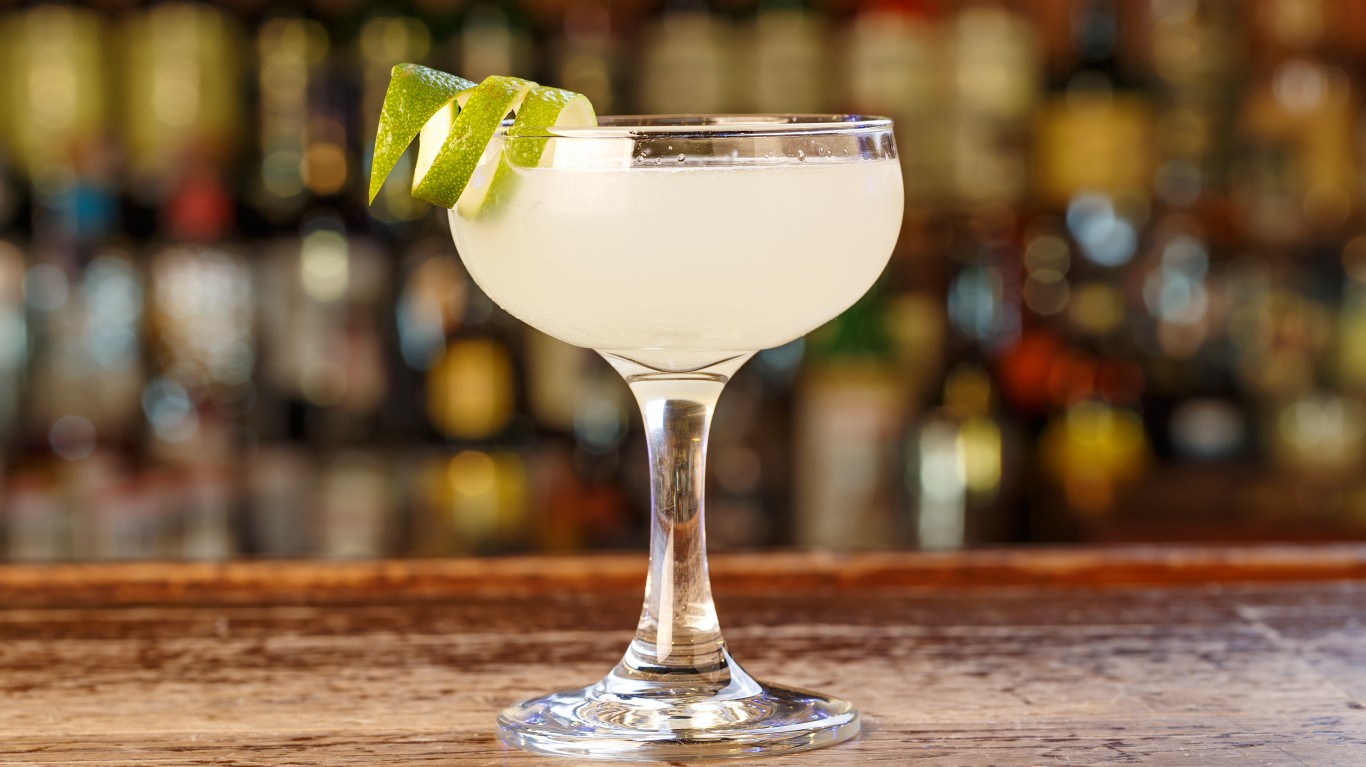
3. Daiquiri
> Main ingredients: White rum, lime juice, superfine sugar
> Origin: Engineer Jennings Cox, Cuba (1896)
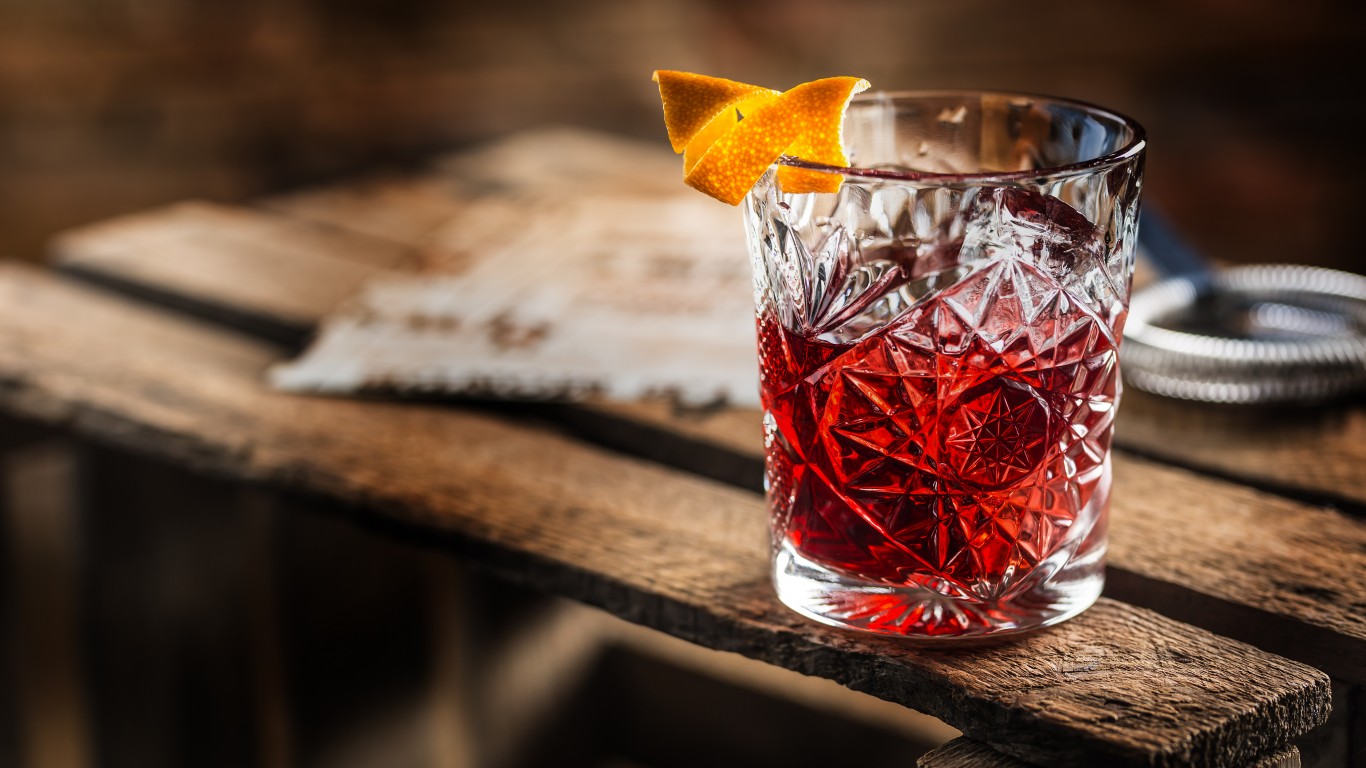
2. Negroni
> Main ingredients: Gin, Campari, sweet vermouth
> Origin: Bartender Fosco Scarselli, Caffè Giacosa, Florence, Italy (1919)
[in-text-ad-2]
1. Old Fashioned
> Main ingredients: Bourbon or rye whiskey, Angostura bitters, sugar cube
> Origin: Disputed (late 19th century)
Take Charge of Your Retirement: Find the Right Financial Advisor For You in Minutes (Sponsor)
Retirement planning doesn’t have to feel overwhelming. The key is finding professional guidance—and we’ve made it easier than ever for you to connect with the right financial advisor for your unique needs.
Here’s how it works:
1️ Answer a Few Simple Questions
Tell us a bit about your goals and preferences—it only takes a few minutes!
2️ Get Your Top Advisor Matches
This tool matches you with qualified advisors who specialize in helping people like you achieve financial success.
3️ Choose Your Best Fit
Review their profiles, schedule an introductory meeting, and select the advisor who feels right for you.
Why wait? Start building the retirement you’ve always dreamed of. Click here to get started today!
Thank you for reading! Have some feedback for us?
Contact the 24/7 Wall St. editorial team.
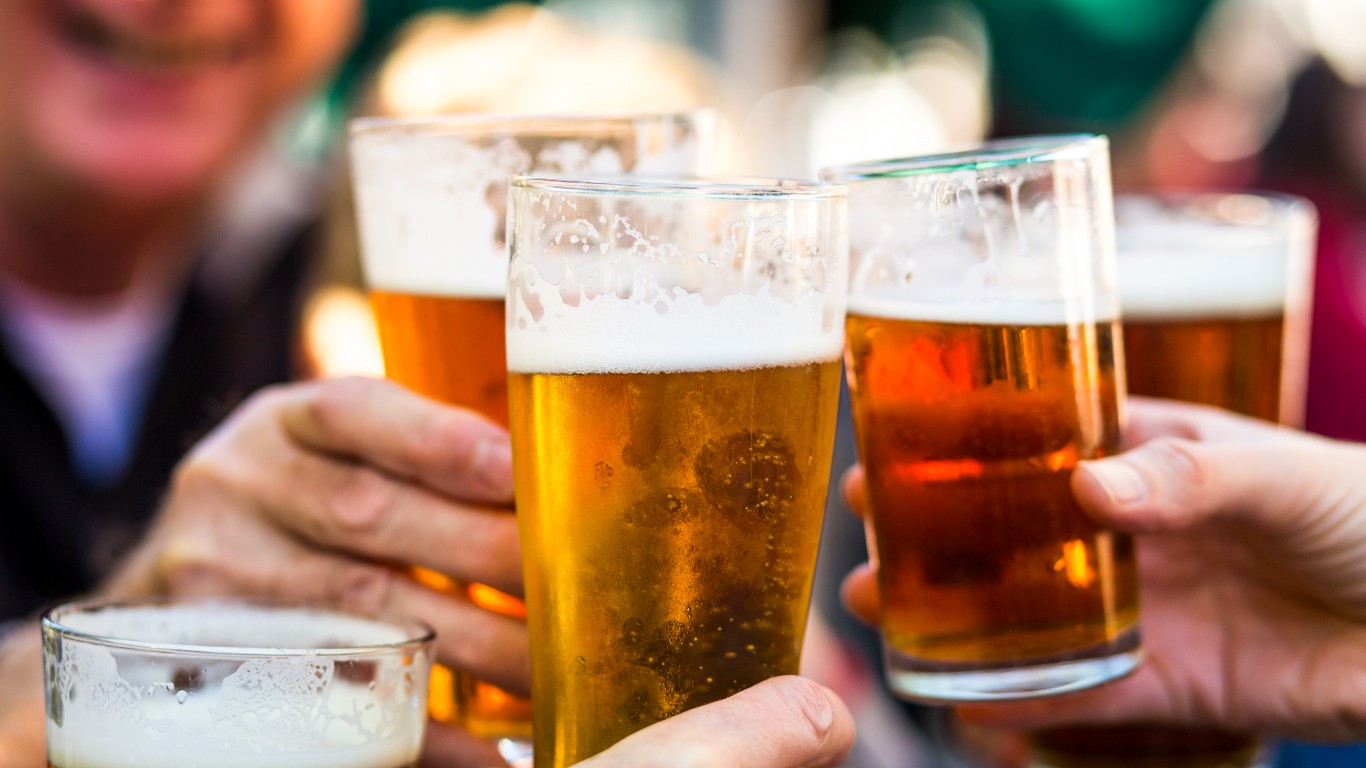 24/7 Wall St.
24/7 Wall St.![Rye Old Fashioned [57/366] by Tim Sackton Rye Old Fashioned [57/366] by Tim Sackton](https://a673b.bigscoots-temp.com/wp-content/uploads/2021/10/imageForEntry25-WBu.jpg)


